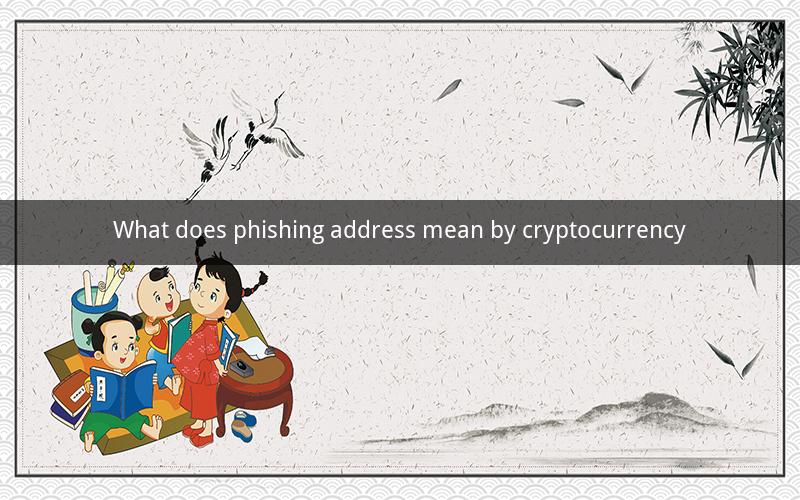
Understanding the Concept of Phishing in the Context of Cryptocurrency
Table of Contents
1. Introduction to Phishing
2. The Rise of Cryptocurrency Phishing
3. How Phishing Attacks Work in Cryptocurrency
4. Types of Cryptocurrency Phishing Attacks
5. The Impact of Cryptocurrency Phishing
6. Preventing Cryptocurrency Phishing Attacks
7. Conclusion
1. Introduction to Phishing
Phishing is a type of cyber attack where attackers attempt to steal sensitive information such as usernames, passwords, and credit card details by posing as a trustworthy entity. This is typically done through fraudulent emails, websites, or messages that appear legitimate.
2. The Rise of Cryptocurrency Phishing
With the increasing popularity of cryptocurrencies, phishing attacks have become more prevalent. Cryptocurrency phishing targets individuals and organizations that are involved in the buying, selling, and trading of digital currencies.
3. How Phishing Attacks Work in Cryptocurrency
Phishing attacks in the cryptocurrency space often involve the following steps:
- Luring the Victim: Attackers send emails or messages that appear to come from reputable cryptocurrency exchanges, wallets, or other services.
- Gaining Trust: The messages are crafted to look convincing, often including logos, branding, and language that mimics the legitimate service.
- Prompting Action: The victim is prompted to take action, such as clicking on a link, downloading an attachment, or providing personal information.
- Stealing Information: Once the victim complies, the attacker captures sensitive information or redirects them to a fraudulent website where they can steal funds.
4. Types of Cryptocurrency Phishing Attacks
There are several types of phishing attacks that target cryptocurrency users:
- Email Phishing: Attackers send emails that mimic legitimate services, asking for login credentials or other personal information.
- Spear Phishing: Highly targeted attacks that are personalized to the victim, often involving detailed information about the target.
- Whaling: Similar to spear phishing, but aimed at high-profile individuals or organizations, such as executives or celebrities.
- Clone Phishing: Attackers create fake websites that look identical to legitimate ones, tricking users into entering their credentials.
- Malware Attacks: Phishing emails may contain malware that infects the victim's device, allowing attackers to steal sensitive information.
5. The Impact of Cryptocurrency Phishing
The impact of cryptocurrency phishing can be severe:
- Financial Loss: Users can lose significant amounts of money through stolen cryptocurrency or compromised accounts.
- Identity Theft: Personal information can be used for identity theft or other fraudulent activities.
- Loss of Trust: Cryptocurrency exchanges and services may lose credibility if they are associated with phishing attacks.
6. Preventing Cryptocurrency Phishing Attacks
To prevent cryptocurrency phishing attacks, users should:
- Be Wary of Unsolicited Emails: Avoid clicking on links or downloading attachments from unknown sources.
- Verify URLs: Always check the URL of websites before entering any sensitive information.
- Use Two-Factor Authentication: Enable two-factor authentication on all cryptocurrency accounts for added security.
- Keep Software Updated: Regularly update operating systems and antivirus software to protect against malware.
- Educate Yourself: Stay informed about the latest phishing techniques and how to recognize them.
7. Conclusion
Cryptocurrency phishing is a growing threat in the digital currency space. By understanding how these attacks work and taking appropriate precautions, users can protect themselves from falling victim to these fraudulent schemes.
---
Questions and Answers
1. What is the primary goal of a phishing attack in the context of cryptocurrency?
- The primary goal is to steal cryptocurrency or sensitive information related to cryptocurrency transactions.
2. How can you tell if an email is a phishing attempt?
- Look for spelling errors, grammatical mistakes, and requests for personal information. Check the email address and URL for legitimacy.
3. What should you do if you receive a suspicious email from a cryptocurrency exchange?
- Do not click on any links or download attachments. Contact the exchange directly through their official website to verify the email's authenticity.
4. Is two-factor authentication effective against phishing attacks?
- Yes, two-factor authentication can provide an additional layer of security, making it more difficult for attackers to gain access to accounts.
5. How can you protect your cryptocurrency wallet from phishing attacks?
- Keep your wallet software updated, use strong passwords, and avoid using public Wi-Fi for transactions.
6. What are some common signs of a cloned cryptocurrency website?
- The website may have a slightly different URL, look identical to the legitimate site, or ask for unnecessary personal information.
7. Can phishing attacks be used to steal cryptocurrency directly from a wallet?
- Yes, attackers can use phishing techniques to trick users into revealing their private keys, which can lead to the theft of cryptocurrency.
8. How can businesses protect their customers from cryptocurrency phishing?
- By educating customers about phishing techniques, implementing strong security measures, and regularly updating their systems.
9. What is the role of cybersecurity awareness in preventing cryptocurrency phishing?
- Cybersecurity awareness is crucial as it helps individuals and businesses recognize and avoid phishing attacks.
10. Is it possible to recover funds lost due to a phishing attack on a cryptocurrency exchange?
- Recovery is possible in some cases, but it depends on the exchange's policies and the extent of the attack. It's essential to report the incident immediately.